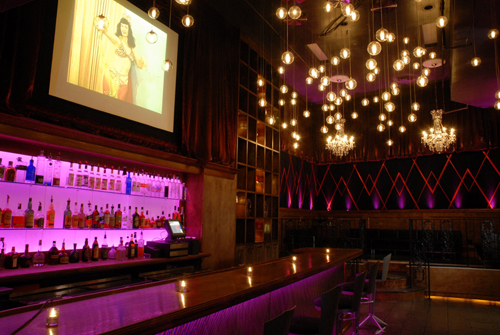In New Orleans, stellar reviews are pouring in for the “new” Ampersand after a six-week summer closure and overhaul of the two-story, 6,000-square-foot venue, which has been categorized as New Orleans’ answer to the flashy Miami and New York club scene. Ampersand quickly became a fixture on the New Orleans party scene after opening nine years ago. The club made its mark with strong formatting toward electronic dance music and a late-night party scene, but recently has shifted gears to accommodate a broader range of clientele and is seeing renewed success.

“We needed to make a change in the way we approached our business model,” says Ampersand owner Billy Blatty, noting that when the economy crashed, his pool of big-spending VIPs also started to come around less frequently. “Ampersand was built around an upscale but underground nightclub experience and the bottle service phenomenon that accompanied it. With the reality of the new economy, we couldn’t rely solely on our club patrons to pay the bills; we had to significantly broaden our audience, all the while setting ourselves apart in customer service. We thought treating every customer as a VIP would win loyalty and transcend all demographics ... and we wanted to share that experience with all of our guests.”
While the “underground freedom” that customers once relished is in the past, Ampersand is finding new customers every week who are enjoying the upscale nature of the new look. Blatty’s customer base is slowly ticking upward toward a late 20s-early 30s clientele as opposed to the bottle-popping mid-20s audience Ampersand made its mark with earlier this decade. Returning guests are also seeing something new: a footprint with an additional 2,000 square feet and a new look and feel. “We went from a classic industrial-type feel to a very warm feeling venue with bordello and burlesque-type touches and finishes. I like to describe it as 1920s vaudevillian theater mixed with late ’60s accents.” With vibrant red curtains, hand-carved wood accents and beautiful chandeliers, it’s no wonder many of Ampersand’s longtime guests are enjoying the new space.
“Not only has my palette become more refined, but the customers who have been coming here for years have also matured. This concept is more suited to a wider audience and I think that’s why people are enjoying Ampersand more than ever before,” Blatty adds, noting that in the new Ampersand, a 55-year old patron can feel just as comfortable as one who’s 25 years old. “We were able to host a ballet, an animal fundraiser with five star chefs cooking on premise, a frat party and a top 10 global DJ performance all in the same week. ... It’s really paid off for us.”
Ampersand is also finding renewed life in private parties, charity events and receptions. For Blatty it’s a rewarding feeling, four years removed from the devastation of Hurricane Katrina that left his club awash in five feet of water. To start his own recovery process, as well as that of his neighbors and patrons, Ampersand was the city’s first nightclub to re-open, less than 90 days after the hurricane, holding speakeasy-style parties so the local population had a place to unwind and dance away the frustrations and stresses of the destruction surrounding them. What was once the city’s top spot for underground dance music was now serving as a place for the healing to begin.
When Blatty re-launched the new Ampersand at the end of September 2009, he did so with his popular annual event Fat Black Pussycat, which has been a staple of the Crescent City party scene since its inception in 1998. It was the perfect avenue to unveil Ampersand’s new look to a loyal audience as well as to introduce it to the masses. While Ampersand’s journey has been both wildly successful and, at times, challenging, Blatty says he wouldn’t change a thing. “We have always adapted to the times and the city, and this is no different. We’ll be here for a long time to come!”